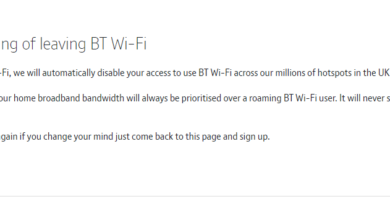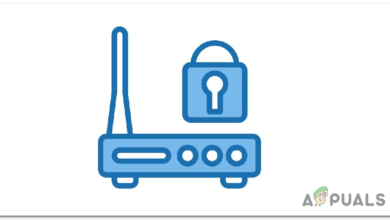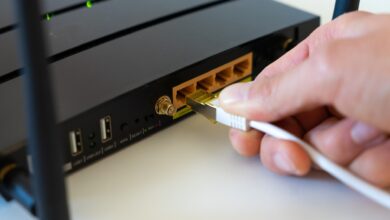Upgrade Firmware on Cisco Devices (Step-by-Step Guide)
Cisco firmware upgrades are essential for keeping your network secure and up-to-date with the latest features and bug fixes. Firmware upgrades help ensure that your network is running the latest version of the operating system, which can help protect against security threats, improve performance, and add new features.

Before beginning the upgrade process, it is important to thoroughly research the new version of the firmware and make sure it is compatible with the device. Upgrading to an incompatible firmware version may cause permanent damage to the device. Once the new version of the firmware is determined to be compatible, it can be downloaded from the vendor‘s website and installed on the device.
Benefits of Upgrading Firmware
- Increased Network Performance: Upgrading firmware can improve the performance of Cisco devices, leading to increased network speeds and better throughput.
- Improved Security: Upgrading firmware can also help ensure that the devices are using the latest security protocols, helping to keep the network secure from malicious attacks.
- Increased Reliability: By updating the firmware on Cisco devices, any potential bugs or glitches that could cause instability or disruption to the device can be eliminated.
- Enhanced Compatibility: Upgrading the firmware on Cisco devices can help ensure that they are compatible with the latest hardware and software, allowing for a smoother experience.
- Reduced Downtime: By keeping the firmware up to date, you can help reduce unexpected downtime and the associated costs.
Upgrade Firmware on Cisco Device
To upgrade the firmware on a Cisco device, follow these steps.
- Download the latest firmware image from Cisco’s website.
- Copy the image to a network server that is accessible by the device.
- Connect to the device using a console or terminal emulator program and log in as an administrator.
- Enter privileged mode by typing “enable” and entering the password.
- Verify the current firmware version running on the device using any of the below commands.
show flash
or
show version
- We can see the firmware name and version using these commands, note down the firmware name as it will be required during the firmware backup process.

- To ensure the safety of your device’s current firmware and configuration during an upgrade, it is essential to backup these elements prior to the upgrade process in case of any potential failure.
- To backup, the firmware use the below command.
copy flash tftp
Replace TFTP with your preferred destination.
- When prompted, enter the IP address of the remote server and the desired filename for the backup as shown below.
Router#copy flash tftp Source filename []? c2900-universalk9-mz.SPA.151-4.M4.bin Address or name of remote host []? 10.0.0.2 Destination filename [c2900-universalk9-mz.SPA.151-4.M4.bin]?
Once the required information is entered, the firmware will be backed up, as shown in the following snippet from the router.

- To learn how to backup the configuration files from the device, refer to this link.
- Having successfully backed up the necessary files, let us now proceed to upgrade the firmware.
- To upgrade the firmware, use the following command.
copy tftp flash
Replace TFTP with your preferred source method.
- When prompted, enter the IP address of the source server as shown below.
Router#copy tftp flash Address or name of remote host []? 10.0.0.2
- Enter the firmware name that you want to copy to the router, Upon hitting enter, the router will prompt for a name to store the firmware as in the router. You can simply hit enter without providing a value, and the router will use the file name as it appears in the source file.
Router#copy tftp flash Address or name of remote host []? 10.0.0.2 Source filename []? c2900-universalk9-mz.SPA.155-3.M4a.bin Destination filename [c2900-universalk9-mz.SPA.155-3.M4a.bin]?
- Upon hitting enter, the firmware will be transferred to the router. Here is the complete snippet from the router for understanding.

- After the new firmware has been transferred to the router, to configure the router to boot using the new firmware, we need to change the boot priority order. To do that follow the below steps.
- Enter config mode using the command “configure terminal”.
- Use the below command to change the boot priority order.
Router#configure terminal Enter configuration commands, one per line. End with CNTL/Z. Router(config)#boot system flash c2900-universalk9-mz.SPA.155-3.M4a.bin
The name of the firmware that you wish to boot the router with must be provided in this command.
- To save the changes to startup-config use the below command in privileged mode.
Router#write Building configuration... [OK]
- After completing the above steps, reboot the server using the following command.
reload
Upon entering the command, you will be prompted for confirmation. Press enter again to reboot the router.
- Once the router has rebooted, use the “show version” command to verify that the router has loaded with the new firmware.

Upgrading the firmware on Cisco IOS is a critical task that should not be taken lightly. By taking the time to research the latest firmware versions and understand the process, you can make sure that your upgrade is safe and successful. Additionally, upgrading your firmware regularly can help keep your network secure and running smoothly. With the right approach and careful planning.
Here are some best practices for upgrading Cisco firmware:
- Backup configuration: Before upgrading, backup the current firmware and the configuration of the device. So that the device can be restored to its previous state in case of any issues during the upgrade process.
- Verify compatibility: Make sure the new firmware version is compatible with the device hardware and current configuration.
- Upgrade in a controlled environment: Upgrade the device in a controlled environment, away from production traffic.
- Stagger upgrades: Upgrade multiple devices in a network one at a time, to minimize the potential impact on the network.
- Test the upgrade: Thoroughly test the device after the upgrade to make sure everything is working as expected.
- Document the upgrade: Document the upgrade process and the new firmware version, to help with future upgrades and troubleshooting.
- Have a rollback plan: Have a plan in place to roll back to the previous firmware version if the upgrade causes issues.
In conclusion, firmware upgrades on Cisco devices are essential for maintaining system reliability, security, and functionality. It is important to properly research the new version of the firmware before beginning the upgrade and to perform the upgrade during a maintenance window if possible. Following these steps will ensure the upgrade is successful and that the device is not damaged.





